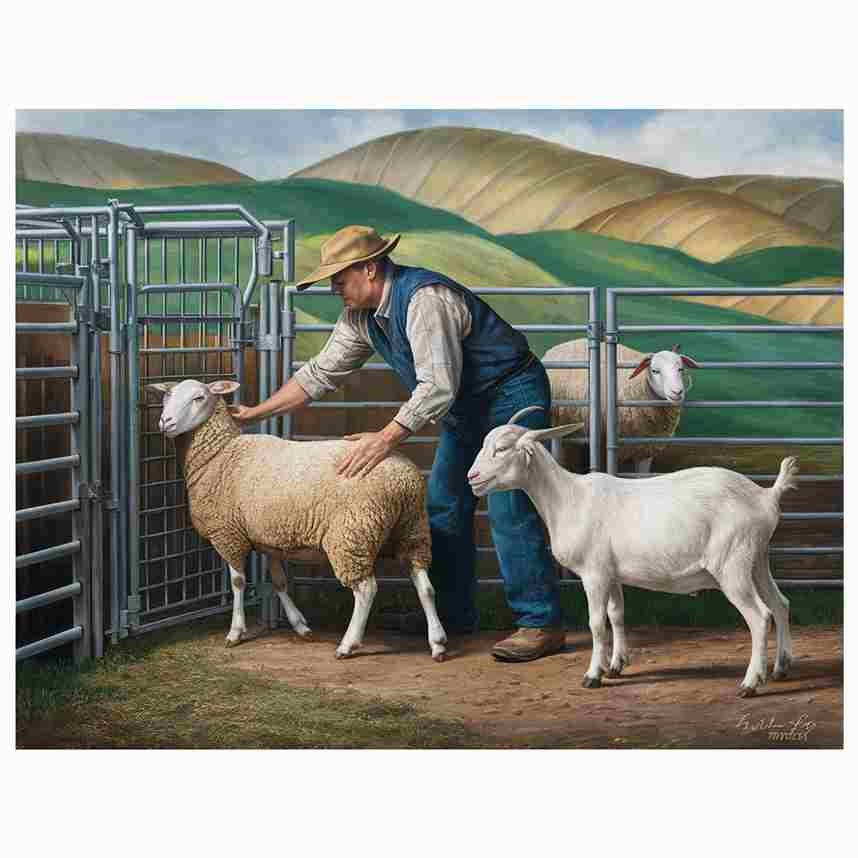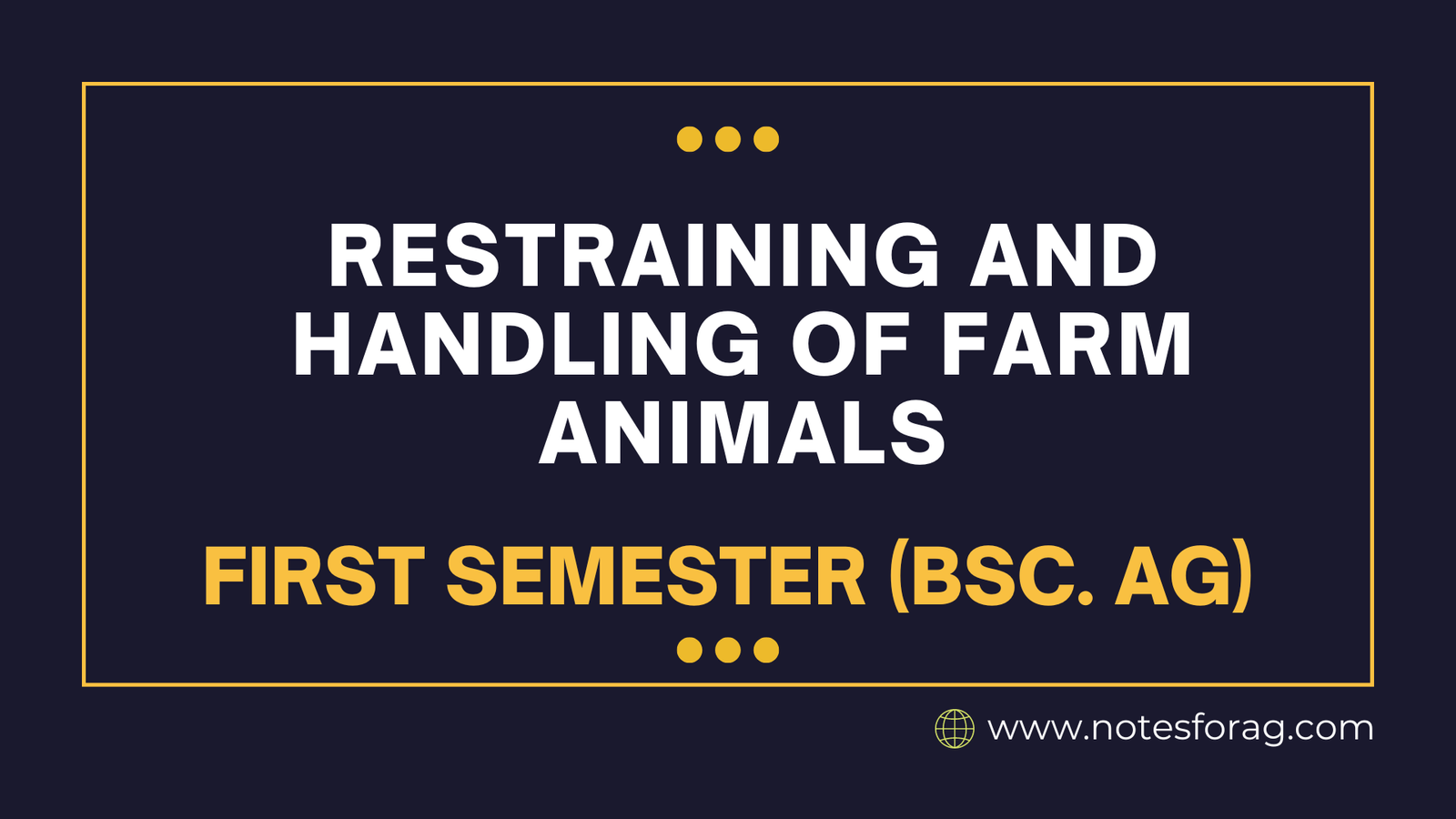Farm animal management requires careful Restraining and handling of the animals. It is impossible to overestimate the importance of these procedures since they protect the safety of the animals as well as the handlers, which promotes an efficient and compassionate agricultural environment. Effective methods in this area boost farm output overall, lessen stress and harm to animals, and improve animal wellbeing.
Table of Contents
Introduction to Animal Restraining and Handling
Animal restraint describes the methods and equipment used to restrict an animal’s behavior or range of motion for a variety of uses, including grooming, medical treatments, and transportation. The purpose of constraint is to facilitate the accomplishment of required activities while assuring the animal’s and the handler’s safety. Physical devices like halters, chutes, or harnesses as well as behavioral strategies to promote cooperation can be used as restraint measures. In order to minimize stress and injuries to the animal and to enable efficient management and care, proper procedures for restraint are crucial.
Animal handling includes all of the techniques and abilities needed to work with farm animals in a safe and efficient manner when doing standard management duties including feeding, cleaning, and inspecting. Understanding animal behavior, communicating with them through appropriate body language and cues, and guiding and controlling them with tough but kind methods are all part of it. By building collaboration and trust between the animals and their handlers, effective animal handling lowers stress, boosts production, and improves animal welfare. For the sake of the animals’ and handlers’ welfare as well as the efficiency of farm operations, good handling technique training is essential.
Techniques for Safely Restraining Different Types of Farm Animals
The techniques for safely restraining and handling different types of farm animals are presented below:
Cattle
1. Head Gate or Chute:
- Firmly restrains the animal’s head to stop it from moving while receiving shots or having its ears tagged.
2. Neck Clamps:
- Keeps the neck still during veterinarian examinations and treatments to avoid kicking or head movements.
3. Halters and Leads:
- When milking or showing cattle, it is helpful to guide them by leading from the head to control their movement.
4. Tipping Tables or Crushes
- Ensures the safety of the animal and the handler by immobilizing the animal for treatments like castration or hoof trimming.
Sheep and Goats

1. Tilt Tables or Cradles:
- Secures the animal securely while providing access to the underside for tasks like as foot trimming or shearing.
2. V-Restrainers:
- Prohibits the animal from moving while undergoing operations like shearing or hoof clipping by securing it in a V-shaped device.
3. Handling Boards or Races:
- Minimizing stress and limiting escape, narrow pathways lead animals into pens or chutes for sorting or treatment.
Pigs
1. Snare Poles
- When performing treatments or transporting a pig, loop around its nose to limit movement and discourage biting.
2. Holding Pens or Panels:
- Pigs should be contained in compact spaces for handling, sorting, or transportation to maintain safety and control.
3. Backboards:
- Guide pigs forward by applying gentle pressure to their sides, facilitating movement during handling.
Poultry
1. Crates or Cages:
- Confinement to ensure safety and reduce stress during veterinarian operations or transit.
2. Manual Restraint:
- Hold birds firmly by their wings or bodies so that examinations or treatments can be performed; avoid making abrupt movements to prevent trauma.
3. Cone Restraints:
- Inverted cones are used to minimize stress and guarantee humane handling by calming and restraining birds during processing or killing.
Common Handling Procedures and Best Practices
- Moving Animals: Make plans, employ herding methods, stay away from loud noises, etc.
- Loading/Unloading: Give yourself room, use non-slip surfaces, and exercise patience.
- Medical Procedures: Relieve pain, apply restraints, and minimize stress.
- Sorting/Penning: Keep animals apart, use sorting tools, and steer clear of crowded areas.
- Transporting: Make sure it is ventilated, keep the distance between stops to a minimum, and follow the rules.
- Overall Best Practices: Emphasize humane treatment, train handlers, employ positive reinforcement, perform routine health checks, and maintain hygiene.
Training and Safety for Handlers
- Training: Provide handlers with knowledge of animal behavior, handling methods, how to operate equipment, and emergency protocols.
- Safety Measures: Offering first aid training, conducting risk assessments, maintaining handling equipment, and providing personal protection equipment.
- Communication: Make sure that instructions are clear, set up efficient routes for communication, and motivate handlers to report any safety issues.
- Regular Review: To continuously improve safety, gather feedback, give updates, look into incidents, and put corrective measures in place.
Livestock productivity, welfare, and safety depend heavily on the restraining and handling of farm animals. Animals are securely restrained and managed throughout procedures including medical treatments, loading, and sorting using a variety of techniques and tools, including halters, chutes, and sorting aids. Understanding animal behavior, applying humane methods, and giving handlers the right training are all essential components of effective handling procedures. Proper restraining and handling help ensure humane treatment of animals and effective farm operations by reducing stress and encouraging calm conduct.
Frequently Asked Question(FAQ)
Why is proper restraining and handling important for farm animals?
Farm animals must be handled and restrained properly to protect their wellbeing, production, and humans’ safety.
What are some common techniques used for restraining farm animals?
Chaises, head gates, halters, and sorting aids are examples of common techniques that are used to properly immobilize animals during various processes.
Related Articles

